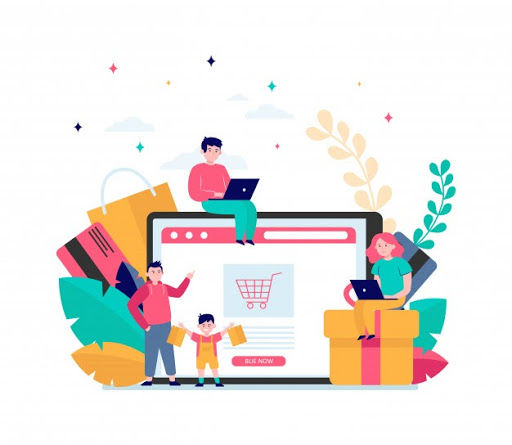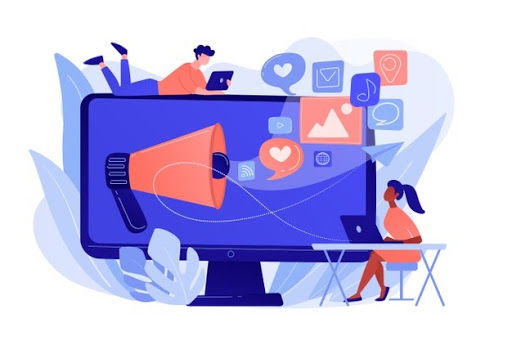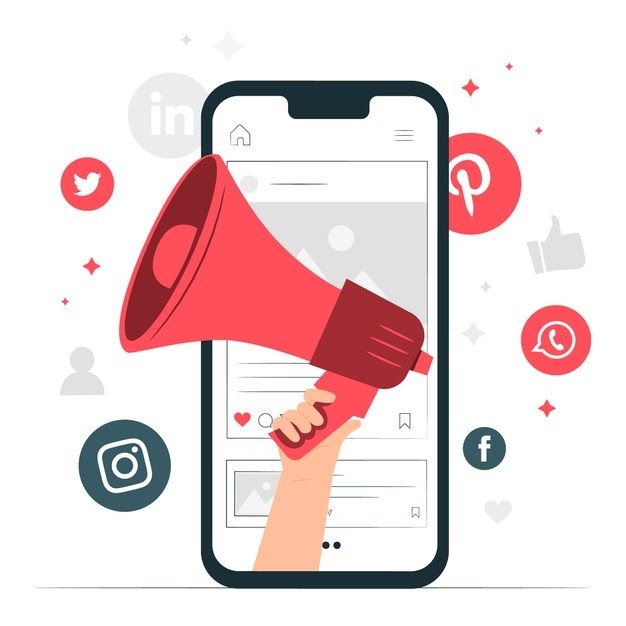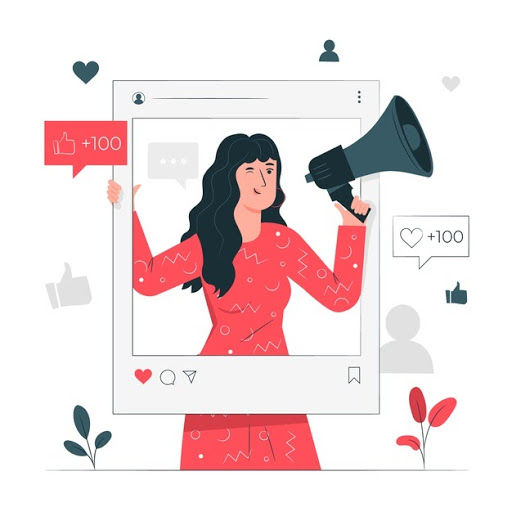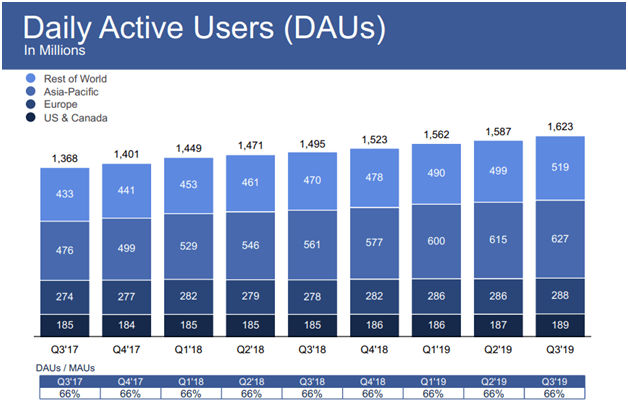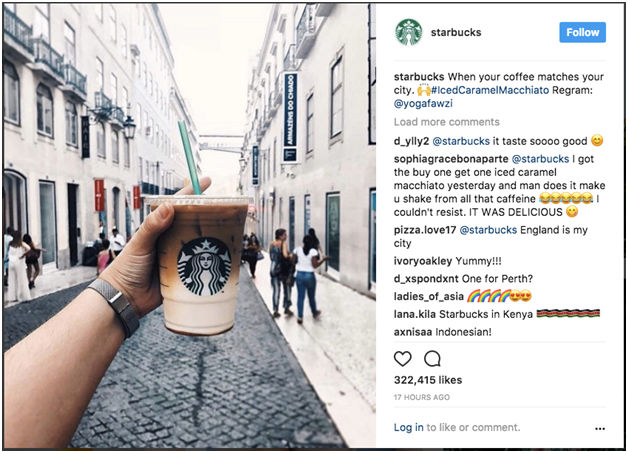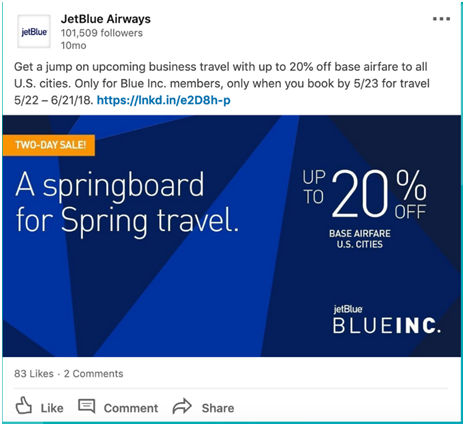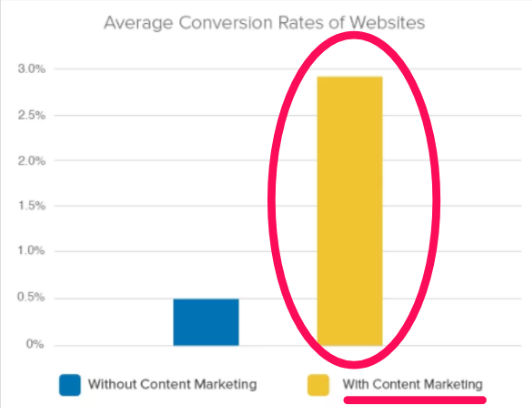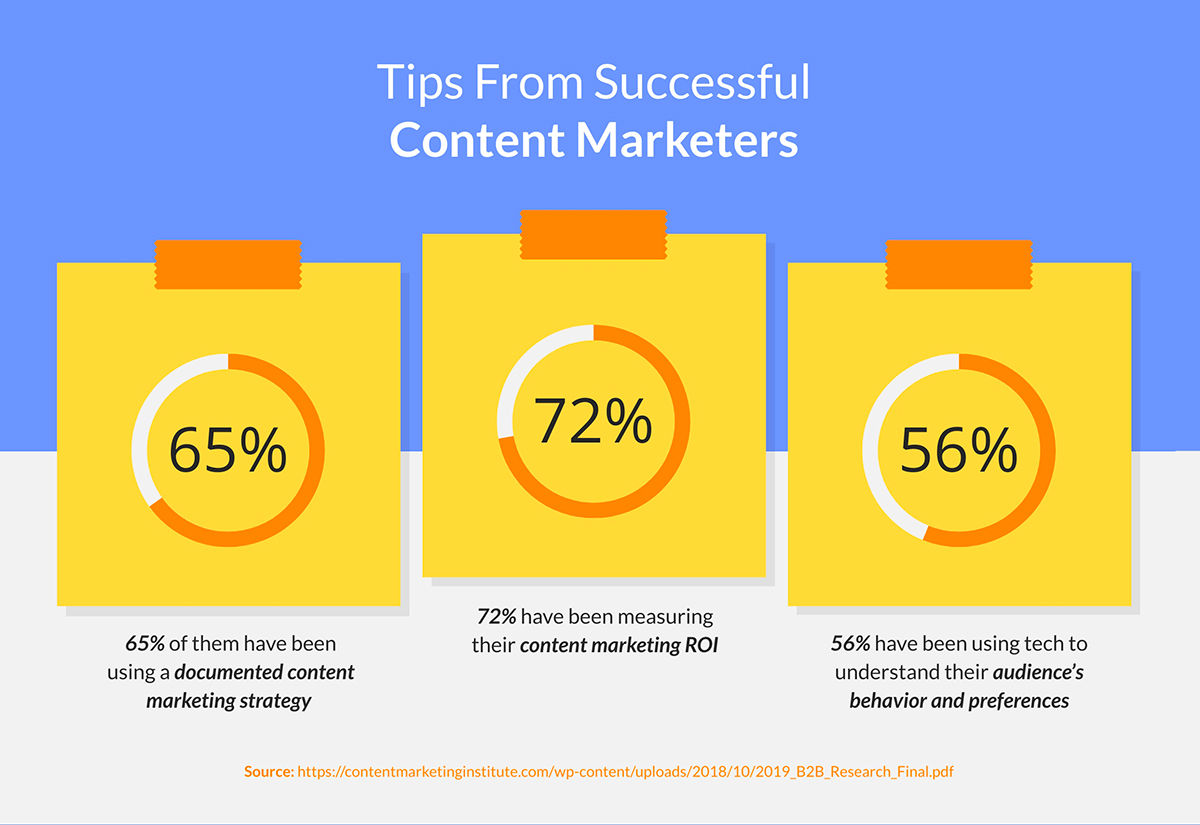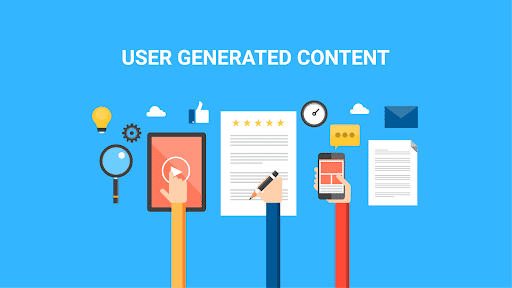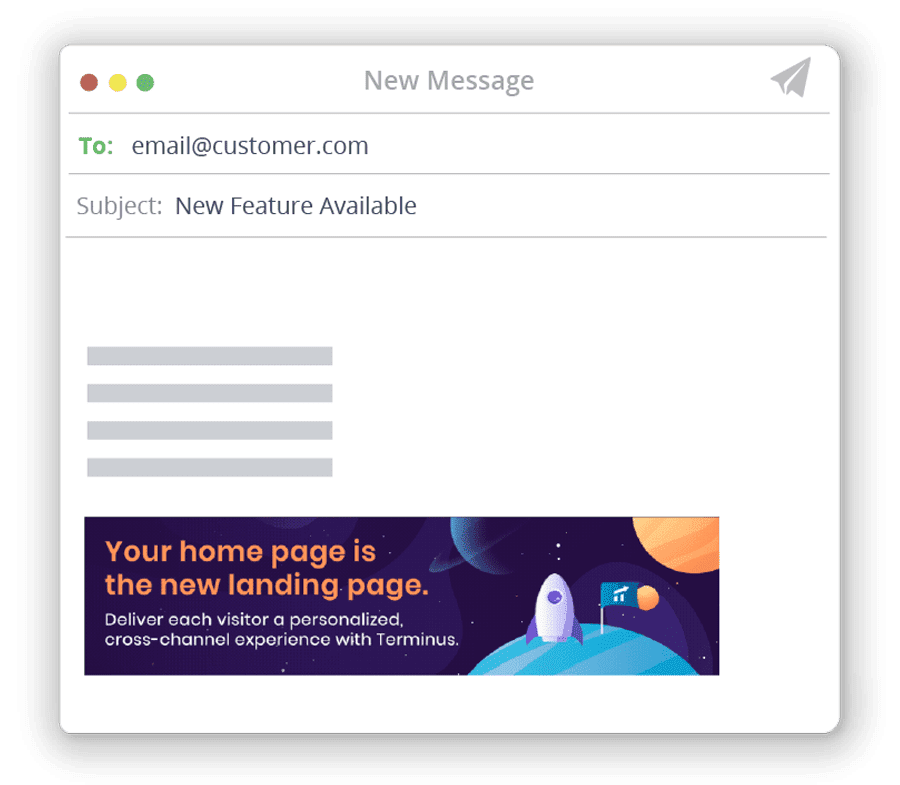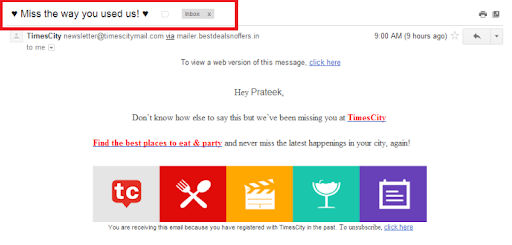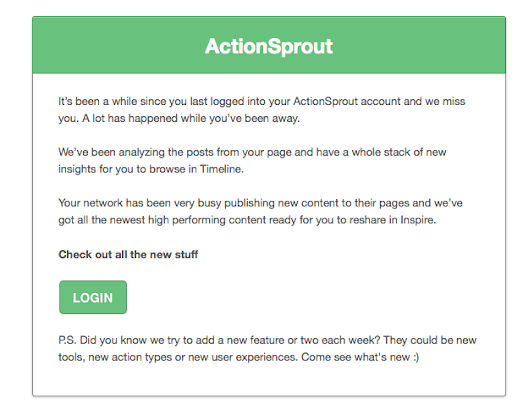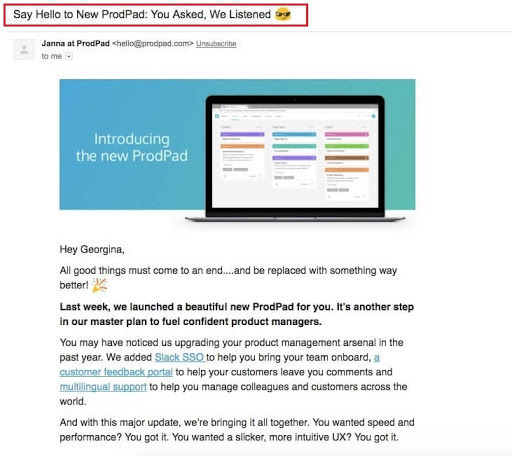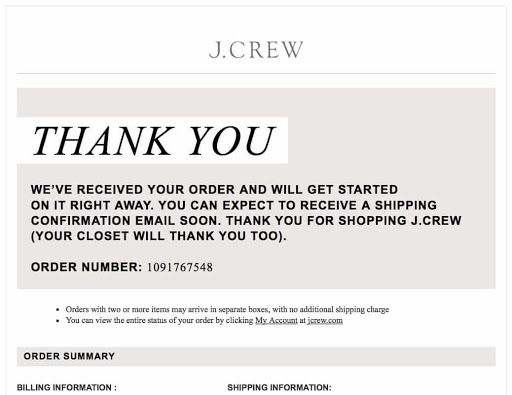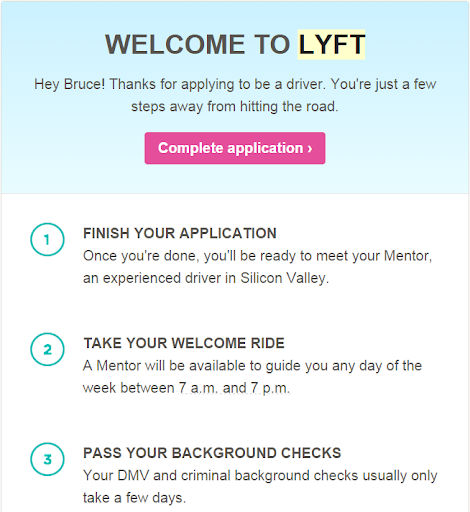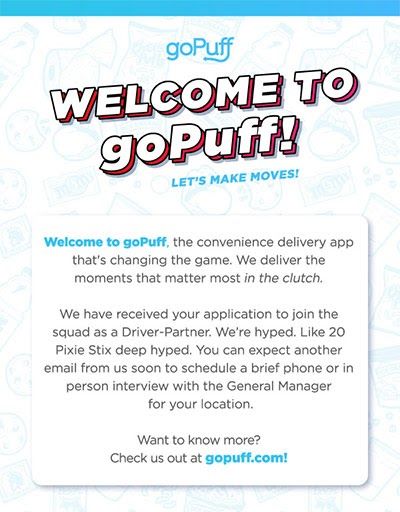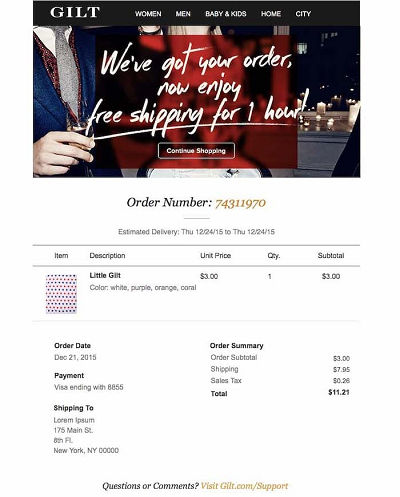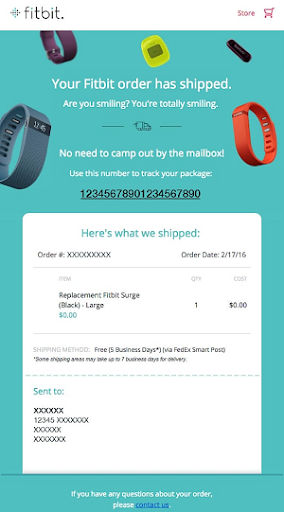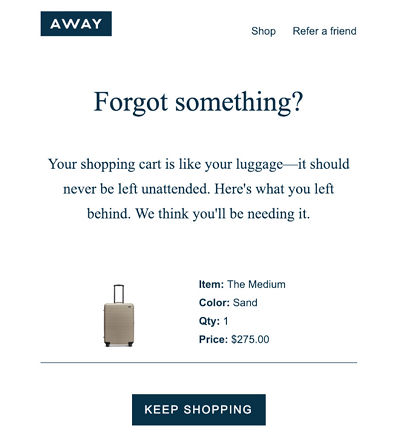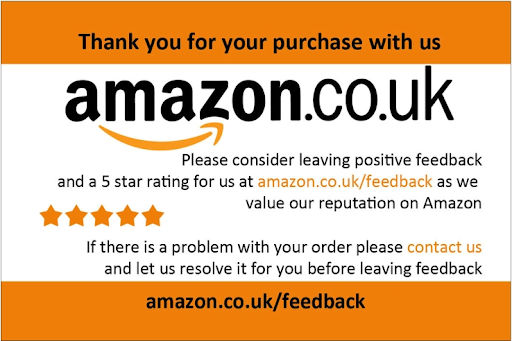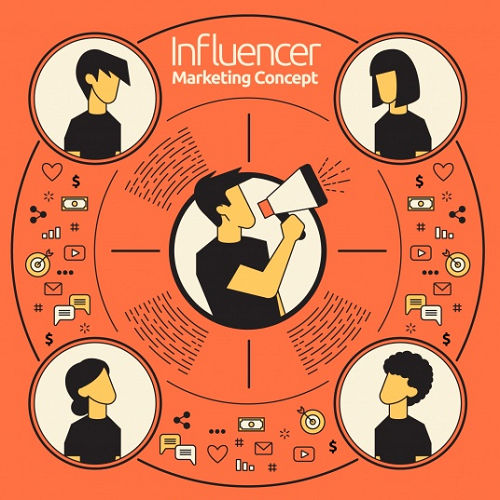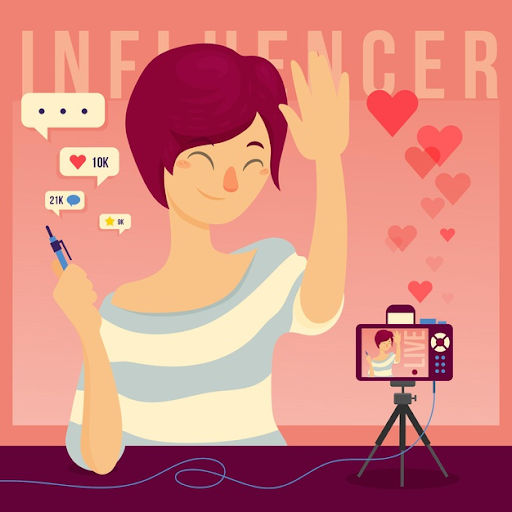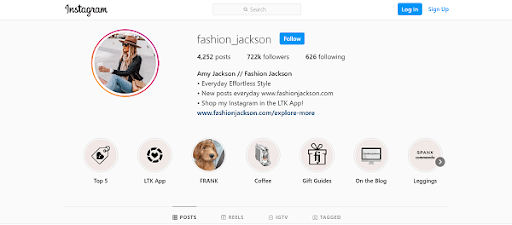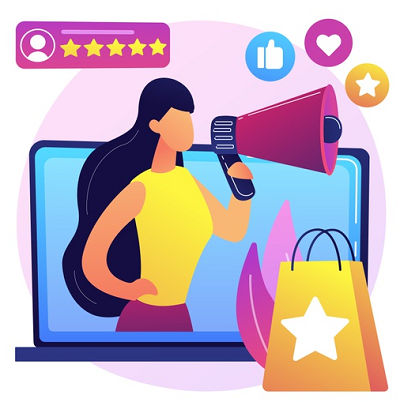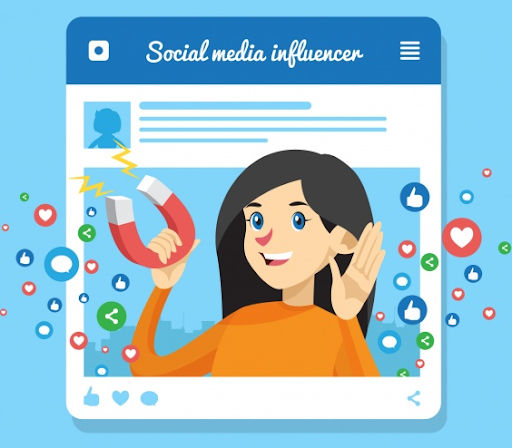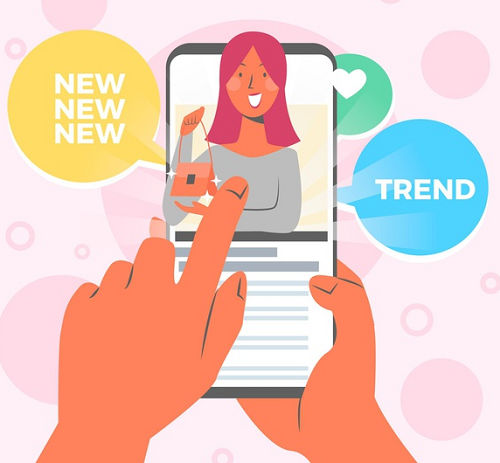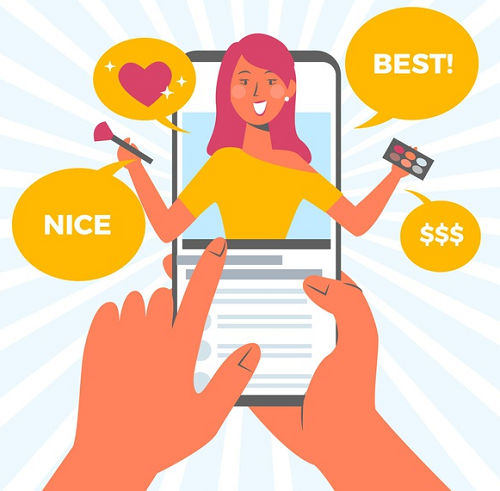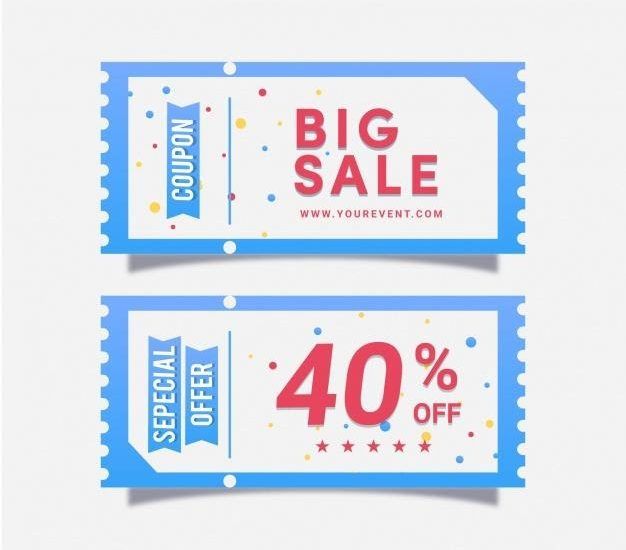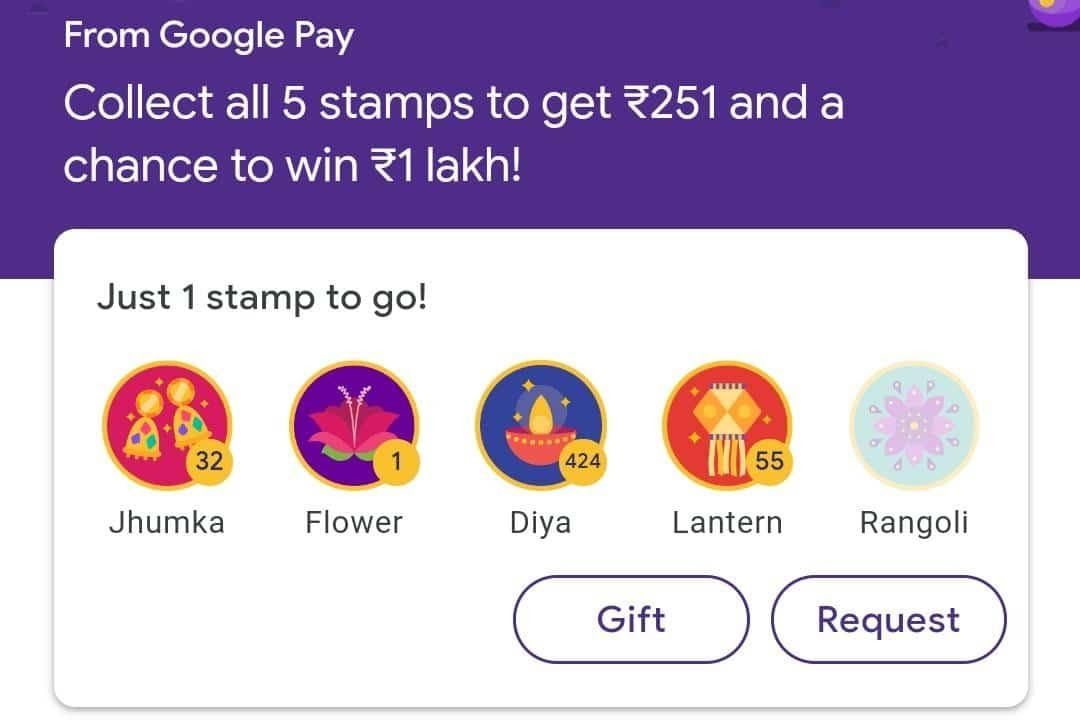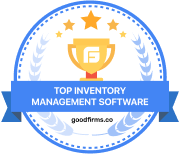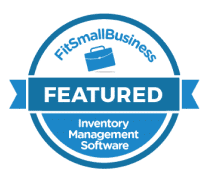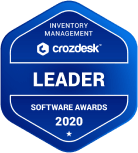What is eCommerce Marketing?
Learn all about various methods for promoting your online stores to the right target audience,
at the right time, on the right platform.
- What is eCommerce?
- Advantages over traditional marketplaces
- Cost Efficient
- Holistic, Digital User Experience
- Convenient, Easier Buying
- Not bound by Geographical Limitations
- Multiple Payment Options
- The eCommerce Market Today
- Business to Consumer (B2C)
- Business to Business (B2B)
- Consumer to Consumer (C2C)
- Consumer to Business (C2B)
- What is eCommerce Marketing?
- Social Media Marketing for eCommerce
- The Role of Content Marketing to uplift eCommerce Marketing
- eCommerce Email Marketing
- Email Marketing Facts and Figures
- What to Include for a Successful Email Marketing?
- Types of eCommerce Email Marketing
- Different Types of Examples of eCommerce Email Marketing
- Influence Marketing for a successful eCommerce Business
- What is Influence Marketing?
- Facts and Figures of Influence Marketing
- How to Identify the Right eCommerce Influencers or Influencer Marketing?
- Benefits of Influencer Marketing for eCommerce Success
- eCommerce Marketing Avenues
- Search Engine Visibility
- Leverage Social Media
- Improve User Experience
- Email Marketing
- Offline Marketing
- eCommerce Marketing Strategies
- Optimize Your Site for Search / Indexing
- Use Content Marketing
- Market on Social Media
- Tap into UGC and Put Influencers to Work for You
- Google AdWords
- Email Marketing
- Retargeting
- Offline Marketing Techniques for Online Businesses
1. What is eCommerce?
Shopify defines eCommerce as “buying and selling goods or services using the internet, and the transfer of money and data to execute these transactions.” The concept is hardly unheard of in today’s times.
By 2023, the USA alone will do more than $740 million worth of sales through eCommerce, as per the latest projections. Now that’s a bandwagon everyone would readily want to jump on! And while most of you might already have your online store or tried to set one up in the past, managing it successfully is often trickier. The good news is that there are multiple tools available today that can help you manage your eCommerce business by taking care of your inventory management, warehousing, and order fulfillment requirements and let you focus on your business.
2. Advantages over traditional marketplaces
The shift from traditional marketplaces to eCommerce was imminent, given how massive the advantages are:
Cost Efficient
Cost efficiency is why switching over to eCommerce from traditional methods is always an easy sell, and quite frankly, a no-brainer. It lowers down a range of costs, right from inventory management to marketing and advertising. Maintaining an eCommerce store is considerably cheaper than maintaining a physical store, considering that you require hardly any workforce once you set up your eCommerce store. Renting out space on the internet for your digital storefront also costs you barely anything if you compare it with renting out physical real estate space. All in all, switching to eCommerce makes a lot of sense, fiscally.
Holistic, Digital User Experience
When you advertise digitally, you have a plethora of data to gain insights. And while it’s true that you can have a physical storefront and still market it digitally, it doesn’t quite make for a holistic, seamless user experience. This is because the audience still has to visit your store to complete the purchase physically.
An eCommerce store helps fill that void. When you sell your products and services online, you provide an end-to-end digital experience to your audience, where you can pitch them your products online, entice them enough to buy them, and make a sale- all from the comfort of their couch.
Convenient, Easier Buying
It goes without saying that with eCommerce, you can browse through products and buy them much quicker than physically visiting a store and doing the same. All the roaming endlessly in the aisles, looking for a salesperson as they avoid making eye contact with you can easily be avoided, all with a few clicks and scrolls. Just type the name of the item you want, and Voila- you get a list of all the options to choose from, along with user-generated ratings and reviews, and other suggested products. And the easier it gets for people to buy things from you, the more inclined they are to do it.
Not bound by Geographical Limitations
If you’ve set up a physical store, there’s only so much ground you can cover, sales-wise. Eventually, you’d start maxing out on customer walk-ins due to saturation and stagnation, as most of your customers, existing as well as potential, would have to be from around your store.
However, with an eCommerce store, you’re bound with no such limitations. Just tie-up with a reliable shipping partner for your deliveries and your products can reach far and wide, up to every nook and corner of the world. eCommerce practically puts the largest multinational companies on the same playing field as the smallest ones operating from a garage. And that’s the best thing about it – it’s a great leveler.
Multiple Payment Options
All the leading eCommerce store builders come with out-of-the-box integrations with multiple payment gateways. These gateways help you make the payment procedure extremely smooth for your customers. Customers are given various payment options, including debit and credit cards, internet banking, UPIs, etc. You can also provide EMIs and Cash On Delivery options on selected products.
All these options mean that you won’t have to lose out on your sales due to a customer not being able to pay via a certain payment method since there are so many options for them to choose from. Doing this translates to a jump in your sales, which is never bad news.
3. The eCommerce Market Today
Today, eCommerce has created a gigantic ecosystem of traders, buyers, and sellers. Raw materials are procured digitally by the manufacturer, who then produces the goods and lists them online, either on a third-party ecommerce store or an online store of their own. The end-user can browse different products and buy them from the store itself. All of this has become a reality, thanks to internet connectivity around the world.
Types of eCommerce Models
Today’s eCommerce can be classified into four main models, based on the nature of the buyer and the seller.
Business to Consumer (B2C)
An eCommerce trade can be called a B2C trade when a business or an organization sells a product or service to an individual consumer. All the leading eCommerce retail websites like Amazon, Alibaba, Flipkart, etc., are the best examples of the B2C model.
Business to Business (B2B)
When a business sells a good or service to another business (e.g., A business sells software-as-a-service for other businesses to use).
When an organization sells its product or services to another organization online, such a trade can be termed B2B eCommerce. A beverage company selling their coffee vending machines to office spaces is a great example of a B2B model.
Consumer to Consumer (C2C)
An eCommerce trade between two individuals can be classified as C2C eCommerce. The best example of this would be selling off your used electronic goods to another user using eBay or OLX.
Consumer to Business (C2B)
C2B eCommerce is when an individual sells their products or services to a business. For example, if you’re a freelance graphic designer and provide your services to a company for their digital marketing artwork, it would be considered a C2B model.
4. What is eCommerce Marketing?
eCommerce marketing is a process of promoting your online store by reaching out to your target audience via various channels. eCommerce Marketing involves many steps, such as identifying your target audience, preparing tailor-made promotional content for them, and pushing the content across several channels.
If you have an online storefront, the chances are that you’re already advertising on it. However, it’s always better to advertise on multiple fronts and not put all your eggs in one basket. A good marketer will always tell you to create a versatile eCommerce marketing strategy, one that stands the test of temporary trends and consistently delivers the results.
There are many ways to market your eCommerce store. All great marketing campaigns have two things common in them, they’re placed accurately, and the messaging is always on point.
Types of eCommerce marketing:
Social Media Marketing
If there is one arena that you cannot afford to ignore while chalking out your online store’s marketing strategy, it’s social media. This is because very few people on this planet cannot reach via social media websites.
Social media offers a wide range of ways in which you can market your products. If your products are aesthetically beautiful, you have websites and apps like Pinterest and Instagram to find people passionate about them. If you want to make a community of people who could potentially buy from you, Facebook lets you create groups and make posts in them.
Every famous social media app offers paid marketing campaigns. A great campaign on Linkedin can help you reach out to many potential job applicants. A well-crafted video campaign on Facebook is sure to fetch large donations for your charity. As an avenue, social media marketing keeps providing newer, more exciting ways to take your products and services to millions of users. And while it comes at a cost, it can turn into a great way to market your eCommerce store if done right.
Content Marketing
Content Marketing is the cornerstone of any eCommerce marketing strategy. From blogs to newsletters, companies today are always looking to create insightful content for their readers. This content is then distributed across multiple channels to reach people who are more likely to be interested.
Content marketing includes but isn’t limited to infographics, explainer videos, blogs and website content, newsletters, promotional videos, etc. Basically, it’s a vast umbrella under which every bit of information you wish to pass to your audience can be covered.
Email Marketing
Email Marketing is the best way to keep in touch with your existing customers and reach out to potential ones. Endearing, personalized emails have always worked well, especially if the tone matches the reader’s persona. If someone abandons the cart, you can email them within a couple of hours, asking them about the things that went wrong and that you will have an offer for them if they’re back within 24 hours. If someone took your free trial that’s now over, and they have yet to activate it, you can periodically check in with them, remind them of all that they’re missing.
All of it can be managed by setting the right automation triggers inside an order management system.
Influencer Marketing
Influencer marketing is a technique where brands collaborate with popular individuals among the brand’s target audience to promote their products. Influencer marketing is lately becoming one of the most commonly used means of advertising.
PPC Campaigns
Google allows you to run advertisements on the search engine via a tool known as PPC or Pay Per Click campaigns. These campaigns basically ask you to enter the keywords that you want to target so that when users search for those keywords, they are shown your ad at the top of their screens.
Of course, it’s much easier said than done since other people are likely fighting for that space. So if your targeted keywords are popular, you’ve got to bid for them. Google will display your Ad only if you bid the highest. However, there are chances that you may go overboard while bidding, and so always keep a number in your mind as to how high you can go, and never lose sight of that.
5. Social Media Marketing for eCommerce
Social networking sites such as Facebook, Instagram, and YouTube now have an unprecedented level of traffic. The BBC says that an average person spends almost two hours of his waking time on social media sites. These statistics make it almost suicidal for eCommerce businesses to have not already tapped into this lucrative marketing avenue. If you aren’t already using social media to spread your brand’s awareness or engage with your customers, you are practically handing your customers out to your competitor.
Social media for e-commerce is used largely for two various purposes, to drive traffic to your website or you can use it to generate sales.
That said, not all businesses must use social media for exclusively those two purposes. Based on the company’s products/services and business goals, the meaning, method, and social media platform of choice differ.
But before delving into various social media platform platforms, one must decide the goals and strategies one wants to employ on social media. Following are the five essential pillars to consider when creating your social media strategy:
Goals
Businesses tend to forget that people don’t visit social media sites to buy things but to socialize and unwind. Hence businesses mustn’t shove products/ads down customer’s throats, focusing on adding value to their audience. It is equally important to define the outcomes of your efforts and a method to quantify the results.
Target Audiences
Researching and profiling your ideal customer is of utmost importance. Most of these insights can be obtained through social media ads, but having them beforehand helps create content that resonates with your target market.
Content Mix
Try creating a social media posting program based on recurring content archetypes. Such posts make it easier for you to think up while adding a rhythm to your posting schedule. This offers your audience both variety and consistency simultaneously.
Process
Set up the infrastructure and tools to execute your strategy efficiently. These tools can help you automate/schedule posting your content using eCommerce automation software.
Channels
Choose the social networking channel that best suits your business and the one you want to dedicate most of your time to.
Each platform offers a different set of users that use the platform for various purposes. The leading social networks used by businesses for eCommerce marketing are listed below.
Facebook Marketing
Few social channels integrate and advertise businesses as robustly as Facebook. As of 2019, the company houses nearly 2.4 billion monthly active users. For nearly every retailer out there, their target audience is already on Facebook.
On top of a vast and varied audience, Facebook offers retailers and businesses the ability to create a “Shop” tab on their business page. This free feature allows the seller to list their products on their Facebook page and directly purchase the seller’s merchandise from the social networking site. Facebook Pixel is another robust feature that ensures your ads are shown to the people most likely to take action, helps with conversion optimization by creating a custom audience, and offers retailers insights around views, clicks, purchases, and much more.
Facebook Messenger is a popular messaging feature that can be leveraged for providing customer service. Facebook also offers the ability to add customer reviews to your business page.
But people generally utilize Facebook for socializing and networking, not to shop. And Facebook’s biggest downside for marketing is that you must pay to promote your posts. Otherwise, owing to the app’s algorithms, it would be challenging to reach many people, even if they “like” your page. So, as a retailer, this makes it imperative that you advertise your products to a laser-targeted audience for optimum results. A mildly receptive audience is going to be much harder to drive sales conversions consistently.
That said, Facebook is a compelling platform for advertising. It offers an extensive database of information (controversially so) that you can leverage for delivering targeted adverts to your ideal customers. But you must ensure that your content is set up to amplify engagement (likes, shares, comments). Viral videos and similarly engaging content can help you in lowering the cost of your advertising.
Take the example of Converse; their post incites an emotional response in the observer, which leads to an almost viral sharing of the said post. Individuals connecting their thought of affection with your post can also lead to a profound association with your brand.
Instagram Marketing
Instagram is a highly visual platform that allows you to market and generate a following in various ways but primarily through image and video-based content. Although owned by Facebook, Instagram is unlike its parent company in many ways, foremost of which is the possibility of getting pretty good results without the necessity of paying to promote yourself. Unlike Facebook, more than 50% of its users (59% of US millennials) are younger audiences, which makes it perfect for a brand with a target audience of people below 40, but not so much the case if your customers are generally older.
Instagram offers you 3 primary ways of posting your post images and videos, Insta Feed posts, which are discoverable through hashtags, Instagram Stories, and Instagram Live. Instagram Stories lets you put out photos and videos having a 24-hour lifespan, and Instagram Live offers the same 24-hour lifespan but allows you to share your moments in real-time or in other words, it can be used to Live stream. These latter features do not show up in your feed, hence keeping your page clean and consistent while still offering you a unique option to test out new ideas and share behind-the-scenes glimpses. Basically, content with a more casual and personal production quality compared to a highly manicured Insta feed content.
Instagram also offers eCommerce-centric features such as Shoppable Instagram posts, highlighting the product’s name, price, and the purchase link. Instagram also offers paid promotional placements, with which you can target audiences based on their location, age, sex, and interests.
Take an example of Starbucks, with a simple yet striking image; they have managed to capture the viewer’s attention, spread awareness about their brand, and incite the viewer to generate a similar kind of content with their hashtag. This gives the brand an extensive collection of user-generated content and indirectly increases sales and engagement.
Pinterest Marketing
Pinterest currently has about 322 million monthly active users, out of which roughly 70% are women. About a third of the Pinterest users in the US use the platform to follow brands and companies, and about 80% of them have purchased products based on their favorite brands’ content on Pinterest.
Although Pinterest offers fewer users than all the other mentioned social media platforms, it is still the second-largest source of social media traffic to Shopify stores.
Pinterest’s most significant advantage for ecommerce is perhaps the simplicity it renders to the entire shopping experience. For example, if you’re looking for a new pair of running shoes, you can do a quick search and scroll through the pins until you’re satisfied with your find. Then, you can either pin this image to a board for later perusal, or you can visit the retailer’s product page for more information on the product.
This browsing and pinning are essential before buying because users want to compare similar products quickly without visiting many different websites or spending hours on online stores. This also opens the door to discovering more eCommerce stores.
Pinterest is essentially a visual search engine. A recent introduction is that of the “Shop the Look” Pins. With the feature, Pinterest allows the user to buy the product they are looking at without leaving the app. This speeds up the buying process but also makes the user experience more seamless.
YouTube Marketing
Yes, YouTube comes across as an odd ecommerce marketing platform. But YouTube is one of the most popular sites on the entire internet and probably the only platform to offer you a chance to really show off videos of what your product or service is really capable of. YouTube has Over 2 billion logged-in users visit every month (amounting to almost 1/3rd of the entire internet). Every day, people watch over a billion hours of video and generate billions of views.
YouTube is perfect for Content Marketing and its ability to connect with consumers in a more direct yet more natural way. Tupperware and other well-known eCommerce companies offer content with a personal touch, like revealing the stories behind their success, stories, or unique experiences of their customers with their respective products, and better explaining how their products work.
YouTube genuinely offers more significant ROI for your audience’s content of value, quality, and interest. But along with that, YouTube also provides valuable user feedback in the form of comments such as ‘I like(or don’t like) so and so thing of the product in this video.’ This can be immensely useful in detecting a product with a bad commercial performance or identifying recent consumer trends.
LinkedIn Marketing
| Members, Million | Percentage of the global total | |
| Asia Pacific | 196 | 27% |
| US/Canada | 191 | 26% |
| Europe | 163 | 23% |
| Latin America | 107 | 15% |
| Middle East & Africa | 63 | 9% |
LinkedIn is like a professional version of Facebook, with over 722 million members(as of Q3 2020). Possibly, one of LinkedIn’s greatest strengths lies in the fact that it has positioned itself as a social network for professionals. LinkedIn is a blessing for B2B organizations. This platform allows you to target your audience by identifying a particular profession or company that may need your products or services. Apart from marketing, LinkedIn is an optimum platform for hiring talent, networking, building thought leadership, and reaching out to brands or people you would like to partner or collaborate with.
LinkedIn is primarily seen as a professional, credible, and no-nonsense trustworthy platform for networking. This means that its users are more interactive with your posts and usually quick to respond to a personal message. Relationships built via LinkedIn with other businesses often have a rippling effect and can benefit you greatly.
While LinkedIn allows you to run your ads on its platform, a more effective tactic for driving eCommerce traffic is to start a group and provide relevant individuals or companies valuable information related to your products or services. Sellers can use this portal to dole out advice regarding the usage and scope of their product, promote webinars or educational events offering free knowledge, samples, or trials. A business’ strong yet optimized Linkedin profile can help showcase your brand’s industry authority to your customers or potential collaborators.
Take the example of JetBlue’s masterfully placed advert. They chose LinkedIn, a professional networking site to offer an airfare discount solely for business travelers. Additionally, The “Two-day sale” creates a sense of urgency, compelling the audience to begin perusing JetBlue flight deals.
6. The Role of Content Marketing to uplift eCommerce Marketing
A successful e-commerce business requires a planned content marketing strategy to uplift your e-commerce marketing efforts. We all know that the e-commerce business is booming rapidly and will escalate more in the coming years. Content marketing is getting massive exposure because of businesses’ excessive use to promote their products in the modern digitized world. 60% B2B marketers and 80% of B2C marketers are using content marketing strategies for promoting their products and services. Today, it is not enough to have only a successful and famous e-commerce site. First and foremost, you will need to create traffic for your website and then converting that particular traffic into potential leads and sales.
What is Content Marketing?
Content marketing is used to drive traffic, build brand awareness, get customer loyalty, and gain a competitive edge. More and more e-commerce businesses have started to understand the importance and benefit of content for getting more customers and sales. For boosting ROI, e-commerce stores need to build a unique and outstanding web presence. Here, you can see the potential of content for increasing the effectiveness of any e-commerce website.
Content Marketing to uplift eCommerce Marketing
#1 Research well before you opt for writing.
Performing in-depth research before you start writing will help you in understanding what people are looking for. Search for such topics that your potential customers might be interested in reading. Look for Google Adwords and significant search engines to look for important keywords. You can also look for customers’ personal experiences and social media accounts and tweets to know customers’ interests.
#2 Write for informing, not for selling.
People always look for truthful information, whether you are writing blogs, guest blogs, or any page sections. They don’t care about your company; they want factual information. Considering the example – suppose you are dealing with electronic products, fashion trends information is not relevant for your business and customers. Provide customers only such data that customers are looking for. You can start promoting your website, services, or products by linking them with customers’ benefits.
#3 Creating product guides
Thousands of shoppers are looking for various products online; creating product guides can be an excellent tool for content marketing. Guiding your users about using your products, you can show them how to buy from you. You can opt for creating how-to-guides using visuals that will cover all the steps for using your products. Don’t forget to offer details in your guides to answer all your questions that your readers want. By submitting all the details in the manual, you can get a better position in your field. You can create video tutorials for engaging your targeted customers and attracting more and more traffic.
#4 User-generated content
UGC (User Generated Content) is a vital part of your content marketing strategy used for e-commerce business. UGC is such content that is created by your customers for your brand and products. Such content can cover video clips, testimonials, reviews, images, and more. If customers post content on the e-commerce website, it will look convincing and authentic to benefit your buyers. As per the research, around 85% of customers feel user-generated content is more powerful than any brand-created content.
7. eCommerce Email Marketing
Who doesn’t love a good marketing strategy? And Emails have been ruling the promotional activities for ages! So, let’s learn a bit about eCommerce Email Marketing and how you can use them to stay in touch with your customers in 2021. The most important detail of email marketing is ‘Right Message, Right Time.’ This is a simple yet effective funda, which means if you send the wrong message, then the marketing is ineffective; also, even if the message is correct, but the timing is wrong, you lose customers.
Email Marketing Facts and Figures
Did you know that billions of people use emails, and this figure is set to increase till 2023, i.e., roughly half of the world’s population!
- Nearly four (4) Billion global users have emails as of 2019, and they are likely to increase to 4.3 Billion by 2023.
- You can expect $42 as an average return on investment by spending only $1 on email marketing.
- Email Marketing is used to distribute organic content, and nearly 9 out of 10 companies use email marketing.
- Nearly 81% of small and medium business owners use email marketing for customer acquisition and retention.
- Approximately 49% of customers prefer promotional emails from their favorite brands every week.
What to Include for a Successful Email Marketing?
Emails may seem to be very simple. You put your customer’s email address, your subject, and your message, and voila, it is done. Well, though technically, it is true, there is a lot of depth to it. Your information, subject line, and the message should be attractive, appealing, and well-curated. And not to forget the design!
#1 To and From Information
Make sure the customer’s email address is mentioned correctly. Make sure you mention the company name or your name in the From section and not just your email address. This way, the message seems more personalized, and the customer can easily relate to you. Try avoiding messages from no-reply@xyz.com because it becomes tough for the customers to reach out to you if they have to contact you for any promotional offer. Instead, send emails from hello@xyz.com. This way, the customer can immediately and easily contact you.
#2 Subject Line
‘Hey Matt, what a wonderful morning. Find your morning offer in here.’
How does this sound? It makes you want to open the email, right? Well, that is why your subject line should always be punchy and engaging. According to data collected by CrazyEgg, a subject line carries nearly 62% of an impact compared to the rest of the factors in an email marketing campaign.
Try to personalize your subject line. Keep it interactive, short, and engaging. Remember, even before opening the email, the customer will read the subject line. If that is not attractive enough, they will not even open the email. So, put in good enough time and thoughts in drafting your subject line.
#3 Main Message
What do you prefer – email full of content or email full of graphics and images or a perfect balance of both? I know it is not hard to read your mind; everyone loves balance. Everyone wants to have a perfect balance of content and images. So, don’t overload your customers with either one.
Instead, do these little things. Write the correct message. Stick to the message and be precise, to-the-point. Use fancy fonts suitable to your business (for example: for B2B, use format fonts, for an apparel or footwear email, you can use a little casual and italic fonts). Make a perfect blend of images and content. Mention your ‘Call to Action’ and put a link or tab. Lastly, personalize your message. And don’t forget, ‘Right Message, Right Time’.
#4 Design
What matters is a good design. Do you agree or not? Now, imagine you get an email with no design, only pure content. Would you be interested in it? Similarly, you too have to make sure your customers get a well-designed email from you. This is your one shot in communicating with them, showing your company. Why would you risk it by sending simple content? So, make sure you throw in the best of your colors, good-looking fonts, and a pinch of images and videos.
Types of eCommerce Email Marketing
eCommerce Email Marketing is used widely for many marketing purposes. It may create awareness, send a promotional message, introduce a new product, or update them on the new policies or new updates. To sum it up, eCommerce Emails are widely divided into three groups: Promotional Emails, Transactional Emails, and Lifecycle Emails.
#1 Promotional Emails
This type of email solely means for promotional activities. For example, the launch of a new book, adding a new product, new limited offers, discounts, or even sending warm greetings.
#2 Transactional Emails
When you complete an order, do you receive ‘Thank you for shopping with us, your order has been confirmed?’ Well, these are order confirmation emails, a type of transactional email. Also, receiving order notifications, order shipment emails, order receipts are transactional emails.
#3 Life-cycle Emails
The Lifecycle Emails are those that send the customers a reminder of an incomplete action, for example, left items in a cart. These emails are generally triggered, and with the help of eCommerce Automation, companies send a reminder email to encourage the customers to complete the activity.
Different Types of Examples of eCommerce Email Marketing
eCommerce Email Marketing is about staying connected with your customers. It also helps with customer retention and engagement. So let us see a few examples of eCommerce Email Marketing and a few emails you can send to your customers.
#1 Welcome Email
Hey, let us make an impression. You know how the saying goes, ‘First Impression is the Last Impression’. According to the email marketing statistics conducted by Oberlo, roughly 82% of customers open an email with a welcome email.
One of the best examples of a Welcome Email is Gopuff.com.
#2 Order Confirmation
eCommerce businesses need to send emails to their customers upon confirmation of orders. This way, customers always feel that they are valued and noticeable. This email need not be wordy, so don’t overdo it by writing too much. All you need to include is the order name, order number, contact information, and order value.
For example GILT.
#3 Order Shipment Email
Yes, we all like to be updated and stay in the loop. So, you need to offer the same to your customers. Always keep them updated with the latest information on their orders. It may be confirmation, shipment, or out for delivery. Keep them in the loop as this helps in building trust over your brand.
For example FitBit.
#4 Cart Abandonment Email
Customers need to be reminded of their orders. Many customers leave the shopping page before completing the purchase due to many reasons. Maybe they were in a hurry or got interrupted due to a call or meeting, or they just lost interest in the purchase or felt the prices were too high. There can be many reasons! But understand, if the customer came to the purchase page, they did find something interesting about the product. So, you need to keep the spark on by sending them emails. According to Oberlo, if you send three (3) cart abandonment emails, the chances of order completion rise to 69% compared to one (1) email.
For example AWAY.
#5 Discount Email
Everyone enjoys a good discount or a reason to visit back on a website. Well, even like a discount, if someone offered you a discount, wouldn’t you take it? So, offer your customers too! Keep them engaged, give them a reason to visit you once again. Also, by offering discounts, you are boosting your sales.
For example Tarte.
#6 Thank You Email
When someone visits your store, you do say ‘Thank You’, right? Or when you have a guest at your residence, then also, you say, ‘Thank You for Visiting Us’. So, how will you thank your customers when they shop online? Well, send them a thank you note. Make them feel special and let them know that you are grateful for them stopping by your eCommerce store.
For example Amazon.
8. Influence Marketing for a successful eCommerce Business
eCommerce businesses keep evolving, and they have to bring in new practices to market their products. In such cases, you keep trying new ways to keep up with the latest marketing trends. One such topic that has made its rounds is Influence Marketing. Influence Marketing is a way to increase your brand awareness, boost sales, and engage the crowd towards a particular product. These days, influencers are the key to giving reviews, feedback, or product descriptions to the larger crowd. Many buyers or consumers rely on their input before making a purchase. This itself shows the importance of Influencers and Influence Marketing.
What is Influence Marketing?
Influence Marketing is a form of Social Media Marketing and Advertising where individuals and businesses are widely known as influencers publically speak about a product or service in the form of feedback, testimonials, reviews, and expert knowledge of the product or service. Through their influential testimonials or reviews, they showcase the product to their best possible knowledge and play a vital role in influencing buying activities.
Facts and Figures of Influence Marketing
- Roughly 33% of the consumers depend on the blog’s reviews, whereas less than 3% rely on TV news and magazines.
- Around 62% of the customers say that they will be loyal to a brand upon noticing their regular engagement activities on social media platforms.
- Roughly 17% of the companies spend half of their marketing budget specially assigned to Influencers.
- Nearly 63% of the companies plan to increase their budget for influencer marketing over the next twelve (12) months compared to 17% of the companies plan to keep the same budget.
How to Identify the Right eCommerce Influencers or Influencer Marketing?
There are several influencers out there, and according to statistics, there are roughly 5,00,000 influencers and counting. In order to simplify the process, the influencers are broadly divided into three categories: Nano Influencers (also known as Micro-Influencers), Macro Influencers, and Mega Influencers (also known as Celebrity Influencers).
Nano Influencers
The Nano Influencers are getting highly popular and receiving significant attention and appreciation. They have as little as thousands to a maximum of fifty thousand followers (50,000) followers. Though they have fewer followers, they are valued because of their niche audience. The reason being they can easily relate to each audience and deal with authenticity as they have a small size of followers, and it is crucial to involve them with actual content. Thus, the possibility of the desired action enhances as compared to the rest.
For example Bronte King. She speaks openly and acts as an advocate for women’s empowerment, body positivity, and girl power. She has nearly 46,000 followers and the founder of Gals Who Graduate.
Macro Influencers
Macro Influencers have already set a good number of followers and are relatively popular amongst their audience. They have a higher number of followers and believe in creating engaging content. They have an audience of 100,000 to nearly a million followers. They mostly charge specific Influencer fees from the brands for their promotion and work towards creating a story in the form of product awareness or brand recognition. This is how they engage their followers through creativity and storytelling attributes. They can be bloggers, influential podcasters, social media-recognized influencers (top stars), and bloggers.
For example Amy Jackson. Also known as Fashion Jackson. Her Instagram page is colorful, and being a fashion blogger, she promotes new styles, fashion trends, beauty, and lifestyle trends. With over 700,000 followers, she also promotes her own fashion designs on her website called www.fashionjackson.com.
Mega Influencers
Mega Influencers are having the highest number of followers and are widely popular worldwide. They have over a million followers, and they keep them engaged and connected by sharing new updates or showcasing their involvement in a brand. They may or may not lead the audience to take the desired action, but, the possibility of brand awareness goes high exponentially because of their large audience. Mega Influencers are mainly a range of celebrities and the highest paid social media stars.
For example, Selena Gomez. A megastar in the eCommerce Influencer Marketing industry, Selena Gomez is a singer, actor, and promoter. They are suitable for companies having large marketing budgets as the mega influencers have extremely high promotional fees because of their fame and influence amongst their followers. Thus, companies who want to create brand awareness and boost traffic contact the mega influencers to make this happen.
Benefits of Influencer Marketing for eCommerce Success
Even before companies work on hiring an influencer, they consider specific goals for the better outreach of the influence marketing strategies. The most common goals and eCommerce objectives that the companies want to achieve and the Influencers help them achieve are as follows:
#1 Brand Awareness
Every company wants to create awareness or recognition for its brand. In fact, many companies’ primary focus is to build brand awareness. Influencers help them achieve this goal by promoting their brand through social media and showcasing their features and benefits. For brand awareness, companies mainly target macro or mega influencers as they have higher audiences. Through their continuous posts and uploads, the audience seems to take a better interest in the brand.
#2 Boosts Traffic and Sales
The company’s other main objective is to increase sales and website traffic. For this, they hire influencers to advertise their products and services so that the product gets noticed by their audience and intrigues them to purchase the product. Product placement is the key in this type of influencer marketing, and it is vital to place the product to motivate the audiences for purchases tactfully.
#3 New Product Launch and Updates
It is crucial to spread the word before the launch of a new product; this way, the customers are aware of the new launch, and the companies can build excitement and enthusiasm amongst the audience before the launch. Influencers use their platform to post updates about the product regularly, and this way, the audience eagerly starts waiting for the product’s launch.
For example, eCommerce Automation has been the ‘talk of the town’ since its addition to the eCommerce industry. Thus, Influencers who promote eCommerce subjects surely emphasize the importance of eCommerce automation for the upliftment of the eCommerce industry.
#4 Reviews and Feedback
Who doesn’t enjoy a good review? In fact, these days, most people purchase a product after checking out its review. How many times have you shopped from Amazon without checking the product reviews? Let me take a wild guess, and say, hardly! According to a survey conducted by BrightLocal, ‘Local Consumer Review Survey 2020’, nearly 87% of the consumers read online reviews for the local businesses before making a decision. Also, only 48% of consumers prefer engaging with a company having less than four (4) stars. Reviews and Feedbacks are very important, and influencers help to create a better review and better brand image. This, in return, builds customer’s trust and brand reliability.
9. eCommerce Marketing Avenues
Search Engine Visibility
Whether you have an online store of your own or sell your products via a 3rd party eCommerce platform, your search engine visibility determines how effective your marketing campaigns are. Optimizing your product pages and website for search engines also leads to a surge in your business’s organic traffic.
Many eCommerce platforms offer tools like Shopify Marketing, where you can create several types of marketing campaigns like SEO and Email Marketing. These tools make your marketing tasks simpler so that you can focus undividedly on your business.
#1 Create SEO-rich content
Any content that you create for your brand has to perform well on the algorithms set by the search engines. No matter how captivating your content is, it won’t reach your audiences if you do not optimize it using various SEO techniques.
#2 Google Shopping
Google has introduced a new feature called Smart Shopping Campaigns where it features Ads from across different eCommerce platforms and websites. You can set up these campaigns for your listings on various eCommerce platforms like Amazon and eBay, or even from your own online store. These are PPC campaigns, meaning you only pay every time someone clicks on your Ad. They are extremely effective means of reaching out to millions of otherwise untapped audiences.
Leverage Social Media
Social media is an omnipresent, omnipotent marketing tool in today’s times. Although it was initially designed to build communities, the entrepreneurs soon realized its immense potential to act as an advertising platform. Some of it is apparent, in the face kind of marketing, while the rest is a more subtle, nuanced type. Either way, brands stand to gain a huge value by having a presence on the social media platforms where their target audience mostly hangs out.
#1 Facebook Store
Facebook Marketplace the most recent foray by the tech giant into the world of eCommerce. It is a space within Facebook where users can buy and sell products. You can list your products on the marketplace and potentially reach millions of users within a minute, all thanks to Facebook’s massive worldwide user base. You can integrate the product page with all the leading eCommerce stores like BigCommerce, and customers can simply add the products to their cart and check out.
#2 Instagram Reels
Instagram has introduced a feature they call “Reels”, which is really just 15-second videos that come with a lot of exciting editing options. The popularity of the feature has soared since it was launched, with more than a little help from the platform itself. Instagram’s algorithm has been aggressively promoting reels by brands and influencers, in a bid to become the best micro-video platform. You can leverage this by creating short, fun videos about your products and customer reviews and promoting them via Reels.
Improve User Experience
#1 Link multiple products together
One of the best ways to upsell is by linking two or more products that are likely to be shopped together. This way, you not just save a customer’s time that they would have otherwise spent trying to find the other products of the set, you also often plant the idea in their head about the product being a part of the set. Always try and link every product in your inventory with at least one more product. That way, you can get more sales without putting in the extra effort.
#2 Reduce Cart Abandonment
Cart Abandonment refers to the phenomenon where a customer adds the product to their cart but doesn’t check out and complete the payment. This is one of the greatest mishaps that can ever occur to an eCommerce brand. To see a user go without a sell, after having reeled them in, is simply undesirable. Therefore, while charting out a customer’s journey through your eCommerce store, always be aware of any bugs that may lead to cart abandonment. Check if all the payment options are functioning properly, if the discount campaigns are running successfully and that there are no other hiccups while checking out the products.
All of this can be easily managed by automating your cart and inventory management.
#3 Grievance Redressals via AI-powered Chatbots
Customers often have questions/concerns about some products. You can simply set up an AI-powered Chatbot which gives them specific information like the price, warranty, return period, etc. about all the products. A brand that’s looking to solve the issues of their customers in real-time always inspires loyalty in them.
Email Marketing
Email Marketing is probably the only form of digital marketing that gives you full autonomy over the kind of content you wish to share with your customers. It’s virtually a one-on-one form of conversation that brands can have with their customers, and hence has one of the highest conversion rates. Getting hold of the email addresses of your target audience may be slightly difficult, but once you do, you can start crafting out engaging content and share them directly to your readers, without any 3rd party platform.
#1 Newsletters
Sending out periodic Newsletters to your subscribers will never go out of style. You can inform them about what your brand has been up to, about the new products you’ve added to your store, and any offers that may have been running. Newsletters are a great way to always be relevant to your target audience. Brands who fail to keep in touch with their subscribers often miss out on a lot of recurring sales, simply because the customers are much more likely to shop from something that keeps springing up in front of them every now and then.
#2 Reminders
Reminders are emails that generally draw the reader’s attention towards an action that the brand wants them to perform. If a user has items in their cart that they have not yet checked out, you can send them reminders via e-mails. If their subscription period is about to be over, you can alert them to renew their subscription. Write creative and persuasive reminder email copies and add a CTA button that leads them straight to the desired webpage.
#3 Season’s Greetings
E-mails are a great way to convey greetings and wish your customers on festive occasions. A lot of brands run marketing campaigns positioned around popular festivals and holidays. With a season’s greetings email, you can both- wish your customers a merry time, and inform them about the offers.
Offline Marketing
Offline Marketing in 2021 may seem like a bizarre suggestion at first. However, the truth is that just like with digital marketing, newer, smarter, and much more efficient ways of offline advertising are also available today. What’s even better is that through technology like VR/AR and IoT, we now have blurred the boundaries between the online and offline avenues, and seem to move seamlessly from one to the other.
#1 Print and Media Ads
Marketing your eCommerce store or specific products in the local newspaper and TV/Radio shows will never go out of style. It still remains a powerful advertising avenue that keeps gaining millions of eyeballs year on year. Advertising options like in-film branding, multiplex Ads, etc. have been added to the wide range of offline marketing options.
#2 QR Codes
QR codes are two-dimensional mosaic-like designs that, when scanned, redirect the user to specific website links. You can create a unique QR code for any link by using any of the QR code generators available online. While advertising your products offline, simply print the QR code that would take the user to that product page on your eCommerce website. They can get to know about the product in detail and purchase it instantly.
10. eCommerce Marketing Strategies
Since 2020, the stakes have been very high for independent online retailers trying to compete with sellers flooding the marketplaces from retailers like Amazon and Walmart. So knowing how to set your brand apart and get your brand name noticed is essential to capturing customers.
In such a neck-to-neck competition, retailers are turning their attention towards employing better marketing strategies and deploying high sale raking marketing campaigns. We compiled a list of 10 tried and tested, expert-approved eCommerce Marketing strategies that you need to try in 2021. These strategies promise eCommerce brands the holy grail of marketing, that is, the right consumer on the right device at the right moment.
Optimize Your Site for Search / Indexing
Search engine optimization (SEO) still forms a vital part of marketing. You must ensure that your website and your individual product pages are properly optimized with the right keywords your audience is searching for.
When optimizing your website, it’s good to put yourself in your customers’ shoes and analyze how they would find your brand and how high or low you are on SEO ranking. Most people start by heading to Google to enter their query and seeing what pops up; they usually prefer the top suggestions and would not go past the 1st or the 2nd page of a google search. Your aim with optimization must be that Google or similar search engines display your products before displaying your competitors’ products. Just being listed on the first page of a search engine result can be a massive boost to your traffic. Similarly, your rank, even on that first page, matters as much.
Certain tools such as Moz and SEMRush Site Audit can help you perform an SEO Audit. An eCommerce SEO audit would examine how your site ranks for the search terms, identify your domain authority, and assess your site architecture to ascertain whether a search engine would find your site to be clunky or hard to navigate. Best audits would also include a competitor analysis.
Apart from ensuring that your website uses the correct phrases to get noticed, fixing technical issues can dramatically improve your site’s SEO health. Common technical SEO issues include:
- Broken links. Do not forget to change existing links when you renamed previous URLs. Broken links send a message to its visitors that this web page no longer exists, triggering a 404 error page.
- Duplicate content. Whether it’s duplicated tags, copied meta descriptions, or on-page plagiarized content, search engines don’t like to see it, and they’ll penalize your search ranking.
- Security issues. Does your site have HTTPS pages that link to HTTP ones? That’s a no-no. Since 2014 google considered this as a ranking factor.
- Slow load times. A poorly performing website might cause some visitors to bounce away before the site even fully loads. A Google study shows a 90% increase in bounce rate when load speed goes from 1 to 5 seconds. But as a website’s load speed increases, Google will rank pages higher in search results for relative keywords.
The technical side of SEOs is often overlooked, but it is no less critical.
Use Content Marketing
Content marketing is a process of creating online material such as blog posts, infographics, videos, images to attract your target audience. This isn’t a direct sell, but rather an indirect one where you plug your product and raise awareness about your brand while providing entertaining and/or educational content to your potential customers.
Your blog shouldn’t just be talking about the new products you have. Instead, if you were to promote a new type of cheese, you can write a post or create a video recipe on “how to make a pizza at home” and calculate the bake time as your cheese and subtly plug how your cheese is better than the rest.
You’d be amazed by the number of people that Google things like “how to bake pizza at home” or “how to make a New York-style pizza at home” Not only are these people looking for recipes, they’re also likely to buy ingredients they see in those recipes.
Long-form content-based blog posts with informational guides can boost your organic SEO by as much as 2 to 3 times over the course of a year. Although blogging seems like a natural choice for eCommerce content marketing, you can also include lead magnets such as ebooks to attract customers to your site. Now whether they purchase it or sign-up for your email list creates a win-win scenario for your business.
Guest blogging is another efficient and cost-effective strategy to increase your reach and position your brand as an expert on a given subject. This, in turn, gives potential customers all the more reason to shop with your brand or, at the very least, visit your site. Ensure that you only submit posts of the utmost quality to high authority and engaged readership publications associated with your business.
Include Reviews on Product Pages
While strategizing, we often underestimate the importance of product reviews. As many as 84% of people shopping online trust online reviews as much as they trust their friends. There are many WordPress plugins and Shopify apps that allow you and make it easy for you to upload customer reviews, including pictures and videos to your product pages.
Market on Social Media
Social media marketing is entirely free and an excellent way to build and nurture relationships with either new or pre-existing customers thanks to content sharing, Facebook recommendations, and algorithms that share what your friends are up to.
In my opinion, for any product-based eCommerce business, Facebook, Instagram, and Pinterest are the three key social media platforms that a business owner should be focusing on. Each platform offers its unique set of features and advantages, but the general rule of thumb in using social media to advance your business is to make sure that you’re focusing on customer relationships more than promoting your products. You need regular and quick responses and interactions to avoid abandoned carts.
Tap into UGC and Put Influencers to Work for You
Various Digital and Content marketing agencies recommend brands encourage their users to produce their own content in exchange for an incentive. This incentive can either be in the form of a discount code or the UGC (user-generated content), be it a picture or a video being shared on the brand’s own social media handle, offering the user’s content exposure. Since other users generate this form of content, it seems more believable and evokes more trust for potential customers than content generated by brands. UGC can increase engagement and conversions, along with building trust and a loyal community. The enormously famous camera brand GoPro is an excellent example of this strategy. Its YouTube channel has 10 million subscribers, 17.6 Million Instagram followers, and a library of high-quality videos, many of which are created by their customers. All these interactions, engagements, and viewership draw attention to the brand and then the product which translates to increased sales.
Now, unlike UGC, where you give users an incentive to generate content, influencer marketing works by paying influencers (social media personalities with a certain amount of fan following) to market or promote your product. Depending on what category or size of influencers you go with, this one might not be as low cost as others. Some influencers may ask for a payment, while others (especially micro-influencers) may just want a set of free products. Instagram particularly is a platform where users and influencers alike are thrilled to engage with brands, so it forms the ideal platform for eCommerce businesses selling products, especially related to the fashion or travel industry.
To judiciously capitalize on this strategy, you’ll have to do your due homework in reaching out only to those influencers that your target audience follows. Micro-influencers or people with localized/niche influence can be just as effective, even if they only have 12,000 followers instead of 12 billion. That’s good news for you, since dealing with a Kardashian might just be more pain than pleasure!
Facebook & Instagram Promotions
Instagram is a highly visual and artistic platform emphasizing images and videos. And you can make the most out of the platform by making your Instagram shoppable. Certain select brands and Shopify stores can create actual Shoppable posts, where you tag products in your Insta feed posts or stories and users click on them to see the basic information like price. They can also click again to purchase the displayed product. This is especially useful when you’re using Instagram ads and promoted posts.
Now since Instagram is owned by Facebook, and both Facebook and Instagram Promotion/Ads operate under the same interface, we’re clumping them together in this article. These ads do not work like Google AdWords. Instead of targeting users by their search intent and showing them ads when they’re looking for you, with Instagram and Facebook ads you get to target the users based on different factors such as their age, location, and interests to introduce them to your product. This is inbound marketing at its finest and is a great way to create demand.
Google AdWords
With Google AdWords, you target specific keywords that best relate to your brand/product, effectively bidding to show up in relevant searches. These Adverts are displayed above the usual google search results, thus giving you an edge.
Google AdWords helps you connect with users who are actively looking for certain products or services that align with your business, meaning they are further along in their research or buying cycle. This makes AdWords a valuable system to invest in. Adwords, although they offer a good return, they aren’t as simplistic as Instagram/Facebook Ads; it involves a lot of complex strategies and would recommend consulting an expert agency.
Email Marketing
Despite the popularity of social media, email still remains the #1 channel of communication for many. As many as 91% of consumers check their email regularly. Email marketing, at its core, is simply sending promotional emails to people who have already given you permission to do so.
And Email marketing has been found to have an ROI of 3800%. The average order value of email marketing is 3 times that of social media. With excellent copywriting and great visuals, you can deliver discount offers, product announcements, and targeted suggestions to an audience that is already interested in your product. Adding user name to the email subject line, or sending automatically customized recommendations based on consumer’s past purchases with segmented email lists can offer your email a 75% higher open rate than those that lacked personalization.
Largely there are two main parts to email marketing:
- Building your email list and
- Sending the right emails
To build your email list, you must begin with offering your customers an attractive offer. You need to lure in your potential customers with the bait of, “There’s something valuable in it for you!” Once your list is ready, we can focus on the type of mails to be sent.
You should be sending the following mails:
- Welcome Email – email welcoming your subscribers when they first join your list
- Email Nurture series – a sequence of emails to educate your customers regarding your brand, your product, or niche
- Cart Abandonment email – you send this mail only when your visitors fill up the cart and abandon it without checking out that order.
- Email Receipts – emails to confirm customer’s purchases; can also be used to send them further promotions!
Retargeting
In retargeting, you send certain specific ads to only those customers or users who have already interacted with or used your products. These users can be the ones who:
- Are your email subscribers.
- Have recently visited certain pages on your website
- Were customers in the past, but are no longer engaged
- Have purchased from you in the past
Facebook is considered to be very profitable and robust for retargeting, but Google Adsense gives Facebook a good run for its money.
Use data and automation to make connections
Analyzing the behavioral patterns of the customers visiting your website or your brick-and-mortar store can help you mold progressive profiles. These can help you create segmented data for each customer, allowing you to offer a more personalized user experience and communication, leading your business to higher conversion rates.
Marketers can also create workflow automation with the help of an eCommerce automation software that includes a series of triggers and actions that can provide customers with a more personalized experience. For example, suppose a customer abandons their cart. In that case, this touchpoint can trigger a response from the automation software, such as sending this customer an email, or web push notification, asking them to come back and check out or offer them a discount for the products in the customer’s cart.
Using segmented data, your brand can send a personalized message. This holds a greater power of conversion over generic marketing spam emails that are bombarded on customers roughly 10 times a day. Using this technique, a Greece-based clothing retailer has increased virtual and real traffic to its flagship store by more than 35% in a month.
They would send perfectly-timed campaigns during the summer holiday season; their customers would be alerted about the offers on swimsuits, suntan lotions, and beach accessories just a couple of days before they left for their weekend escapades.
11. Offline Marketing Techniques for Online Businesses
Offline Marketing for an online store may seem like a bizarre idea at first. However, if you know anything about advertising, you know that cross-platform promotions always throw up surprising results. The case with offline marketing is no different. Leading eCommerce companies today invest heavily in multiple offline marketing channels, mainly because they have access to statistics and case studies, some of which are mentioned throughout.
Mail letters, Catalogs, and Discount Coupons
Postal mail is one marketing channel that even the most prominent eCommerce companies leverage. Not everyone in your target group is tech-savvy. These people are likely to miss out on your latest email newsletters and offer. Hence, it’s never a bad idea to send them a yearly or a bi-yearly update of what you’ve been up to, along with a shiny new product catalog and some exclusive offers for them.
This adds a layer of personalization, which the customers always have a huge affinity for, and hence are much more likely to convert into some form of sale.
Fun Fact: A whopping 61% of people overwhelmingly voted for discount coupons as a sure-shot way to drive customer loyalty.
Sponsorships
eCommerce companies often spend a lot of their revenue on sponsorships for different events. All around the world, we see award nights, sporting events, charities, etc., being sponsored by some of the biggest names. This increases brand visibility dramatically and intrigues those who attend the events, thereby driving awareness.
Case Study: BYJU’S, which is an online learning platform, recently started sponsoring the Indian Men’s cricket team. The team’s uniform sports a huge logo of the brand and hence has added to a lot of buzz around the brand.
Fun Fact: We at Orderhive have played a significant role in powering Byju’s rapid growth with our backend centralization and shipping management tool. Learn more about it here.
Print and Media Ads
Conventional advertising never goes out of style. Even as the internet has gripped the entire world, traditional ads still hold a large chunk of the masses. This is why you’re always likely to see the intersectionality of both mediums, As likely as you are to come across an Ad for your favorite TV show while browsing through the internet, you’re also going to be shown an Ad for a leading eCommerce company while watching the Super bowl or a Boxing Day test match. What this shows is that companies are aware of their target audience being present across different marketing channels, and want to leverage it fully.
Some of the best avenues for businesses to market themselves in the traditional advertising field are:
#1 In-Flight Magazines
These have some of the highest conversion rates as far as offline marketing is concerned. The primary reason for that is that these ads are likely to get the readers’ undivided attention since there isn’t much to do during the flights.
#2 Radios and TV Ads
Radio and TV Ads are how most of us got our first understanding of what advertisements are. We started speaking of Ads before we even fully knew what the word meant, thanks to some TV commercial that just stuck in our heads. This is also the reason why it’s still such a popular offline advertising medium. The impressions of TV and radio ads last much longer than any other form, simply because they’re repeated again and again until they stick.
#3 Billboards
Billboards are the giant spaces in the sky that a company can rent to write audacious sentences. But of course, they do much more than that. The entire idea of Billboards is to be in your face without you feeling they’re in your face. They don’t have to work hard to capture your attention. Due to their sheer enormity, and smart placement in crowded areas, right by a flyover or right in front of multi-storey buildings, illuminated by countless perennial sources of bright light, billboards grab eyeballs naturally. This is why they’re such amazing marketing avenues.
#4 Public Participation Campaigns
Another exciting way to gamify your offline marketing is by making the customers part of your campaign. Brands often find a way to create campaigns that involve their customers to perform certain actions, like take selfies with a mascot, or record a video of them using the brand, etc. The customers invest their time and energy into the campaign and become the ambassadors of the brand, thereby creating a marketing chain that translates into a lot of buzz around the brand. Some of the best ways to create public participation campaigns are:
#5 Collectibles and Contests
Since time immemorial, brands have understood the value of peaking customers’ interests by gamification of their sales. They achieve this by designing a campaign where the customers receive a seemingly common item like a toy, but as a collectible. The gamification lies in the customer being eager to complete the full set and hence buying more. Brands then create a contest out of it and award prizes to those who manage to collect the full set.
Case Study: Google Pay India recently launched a Diwali stamp collection campaign where they gave different stamps to people who sent or received money via the UPI app. This drove people crazy who went on a wild goose chase to collect all the stamps and win prizes. Very few actually got it, but the number of transactions on the app skyrocketed.
#6 QR Codes
While sharing links may be easy when you’re marketing online, it doesn’t work as seamlessly when you share links offline as it can be a cumbersome task for someone to manually type them. Enter, QR codes. Each QR code is unique and works as a link to the page that is attached to it. Companies can create different QR codes for different landing pages, and print them on their product catalogs. You can create a QR code to the app store page from where users can download your app, and easily boost your downloads. The leads that come through these QR codes can be mapped by deploying a powerful order management system, and the effectiveness of the campaign can be easily measured.
This is yet another offline campaigning tactic that many e-retailers are increasingly corporating into their marketing plans.
Brand Collaborations for Social Good
Brands have often collaborated with each other when their products complement each other. E.g. A pizza brand may join forces with a soft drink brand and only serve that soft drink in all of their outlets. Such deals are very common and hence nobody bats an eye. However, brands that are competing for the same space in the market often collaborate for social good. Such collaborations gather a lot of attention and are a great way of humanizing the brand. These campaigns serve the twin purpose of fulfilling the role of good samaritans and gathering a reputation of being a brand that is empathetic.
Case Study: Burger King created a campaign called Day without a Whopper where they stopped selling their most successful product “Whopper” and asked the customers to buy a Big Mac from McDonald’s instead. This was because MacDonald’s had decided to donate all the earnings from that day to a children’s charity. On any given day, you’d find both these brands fighting each other tooth and nail through huge PR campaigns. But for this campaign, they decided to come together for social good. This was one of the best collaborations in recent history.




